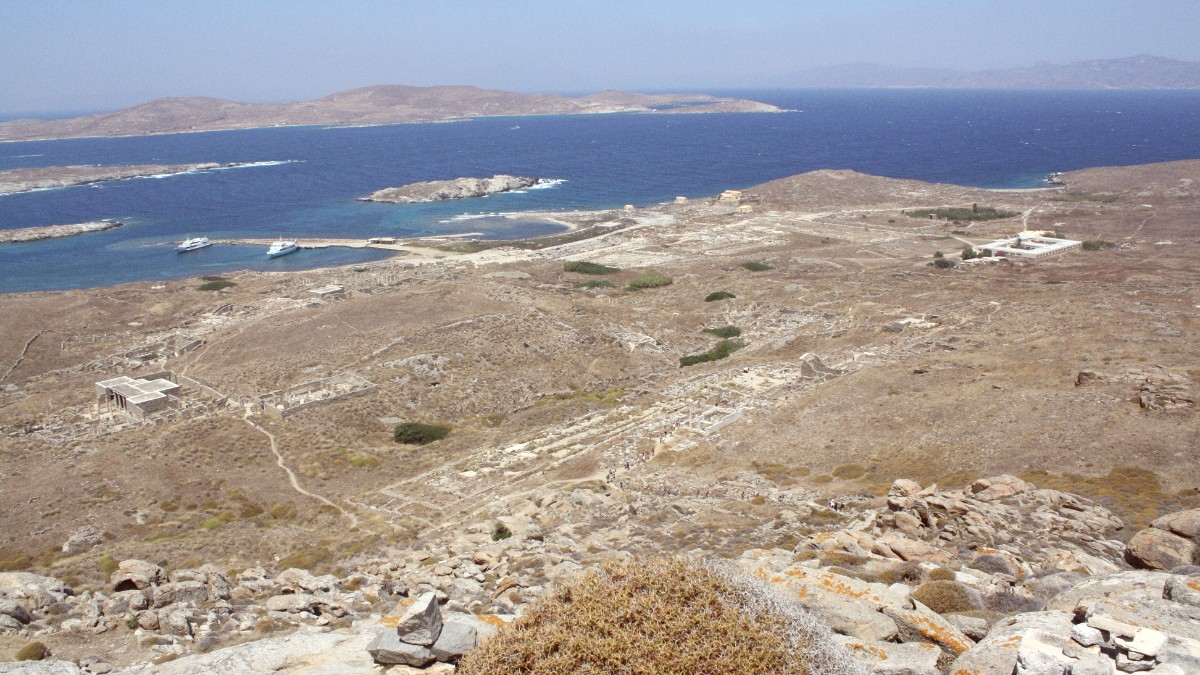
Greece
The entire island of Delos operates as an open-air museum, one of Greece's most significant archaeological sites. It served as a major pan-Hellenic sanctuary and a bustling commercial port in antiquity. Mythology places it as the birthplace of Apollo and Artemis, granting it immense sacred significance.
While Delos centers on its historical past, Mykonos presents diverse attractions, including lively beaches, charming towns, and nightlife, complementing your historical excursion.
Plan your visit carefully, especially during holidays or off-peak seasons, to avoid unexpected closures.
The Archaeological Museum of Delos, located within the site, offers valuable context. It houses original statues and artifacts, including the original Lions, aiding comprehension of the outdoor ruins.
The first morning ferry (around 9:00 AM or 10:00 AM) or the late afternoon (last ferry) see fewer crowds. Shoulder seasons (April-May, September-October) generally mean fewer crowds and more comfortable temperatures.
Capture the iconic marble lions. Frame the ancient theatre with the sparkling Aegean Sea behind it. Photograph the intricate details of the mosaics in the House of Dionysus, House of the Dolphins, and House of the Masks.
Explore the full extent of the site beyond the direct path. The summit of Mount Kynthos grants the best overall view of the archaeological site and the Cycladic archipelago.
Consider booking a tour that bundles your ferry ticket with a licensed guide from GetYourGuide for a complete experience.
The Archaeological Museum of Delos forms an integral part of your visit, granting important context to the ruins scattered across the island.
Located within the archaeological site, this museum houses a prominent collection of artifacts found on the island.
See the original marble lions, offering a closer look at these ancient sculptures.
Discover Kouroi and Kore figures, demonstrating ancient Greek sculptural art, alongside mosaics salvaged from houses.
View vases, pottery, everyday objects, and architectural fragments, all providing valuable context to the outdoor ruins.
The museum is a critical stop for a comprehensive grasp of Delos's historical significance.
Delos holds no other specialized or niche museums beyond the main Archaeological Museum. The island itself is the museum.
No art galleries or exhibition spaces are found on Delos. For these, explore Mykonos Town, which features a few contemporary art galleries and local artisan shops.
Delos does not host cultural centers or modern performance venues. Its ancient theatre once served this purpose. Mykonos may offer some small cultural happenings during the summer.
No known special exhibits or regular programming occur on Delos. The focus remains on the permanent archaeological collection and the open-air site.
The entire island of Delos is a historical site, offering a window into multiple ancient periods through its extensive archaeological remains.
While mainly an archaeological site, Delos also features unique natural elements and quiet spots for exploration.
Delos presents a rugged and sparse natural landscape, typical of the Cyclades. Its main natural feature and highlight is the summit of Mount Kynthos.
While not a beach destination, Delos contains an unique natural feature related to its mythology and offers some wildlife viewing.
Beyond the main highlights, Delos presents quieter spots and unique perspectives for those willing to explore more deeply.
Consider spending extra time in the residential quarters to appreciate detailed mosaics and house layouts.
Most areas on Delos form part of the main archaeological site and receive tourist visits. The "hidden gems" involve taking the time to explore the full extent of the site rather than just the main highlights.
The island's small size and hilly nature, culminating in Mount Kynthos, comprise its geological features, with exposed granite and schist bedrock.
Capture the ancient beauty of Delos with these special photographic moments.
Sunrise/Sunset Photos from Mount Kynthos are typically only possible with special permission for an overnight stay, generally not permitted for tourists.
Stay on marked paths to avoid damaging ruins or stepping on uneven ground. Observe all signage. Protection from the sun is paramount.
Delos is an active archaeological area. Do not move or take any artifacts. Littering is strictly forbidden. History is preserved through respectful visits.
The site has uneven terrain, steps, and steep paths. It might present challenges for visitors with limited mobility. The museum has ramp access.